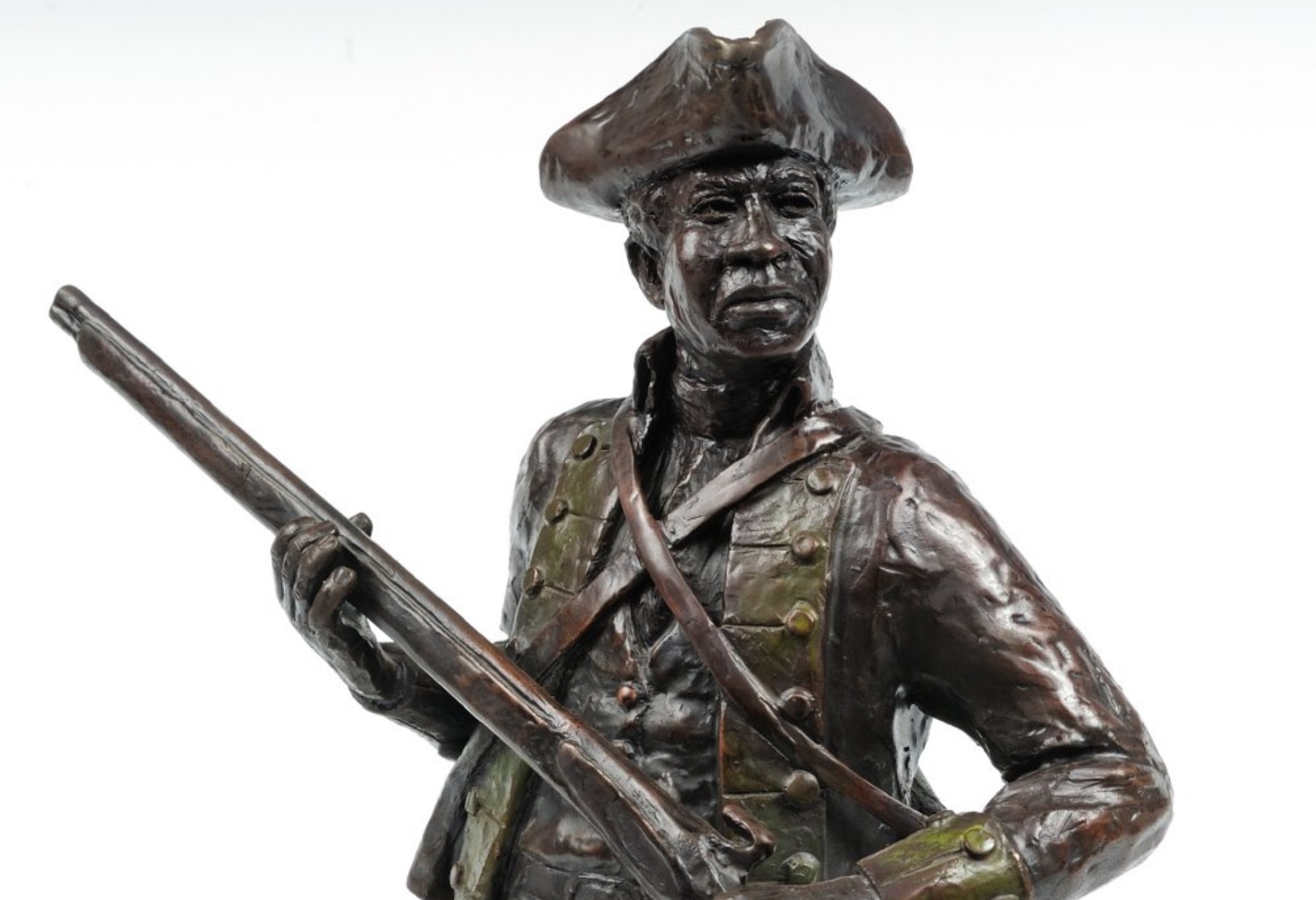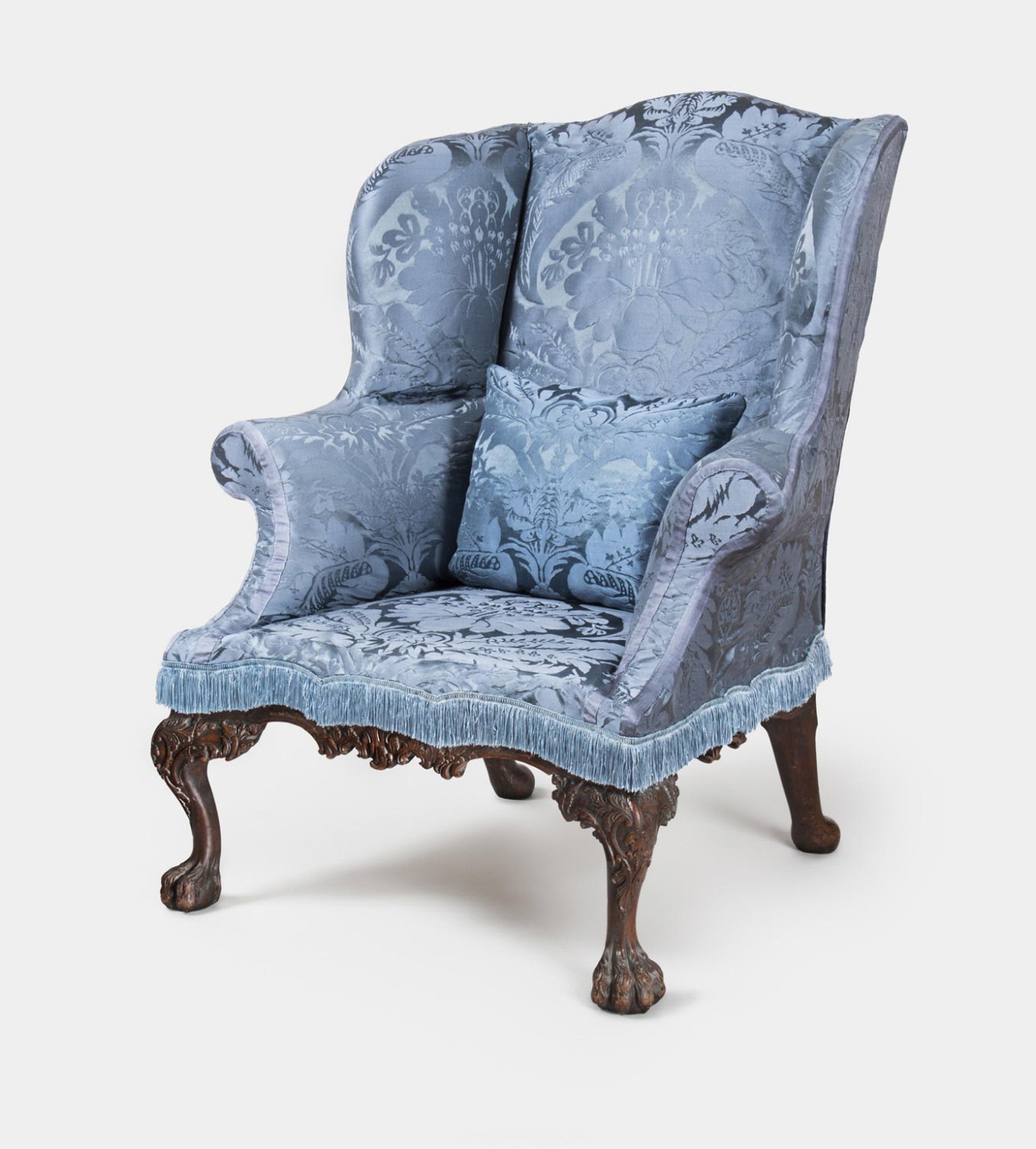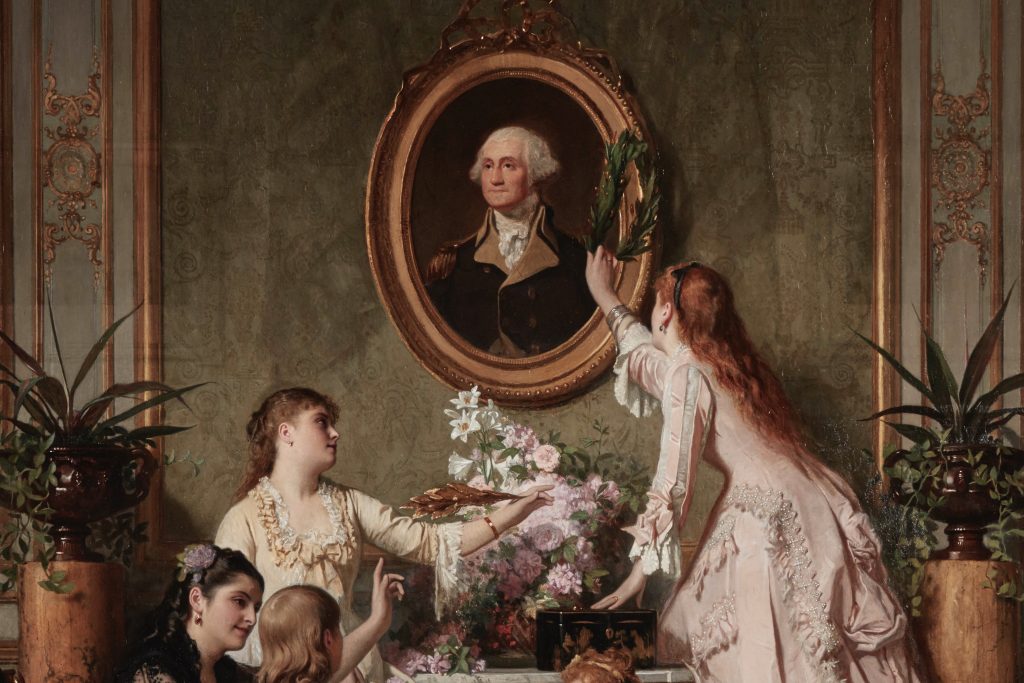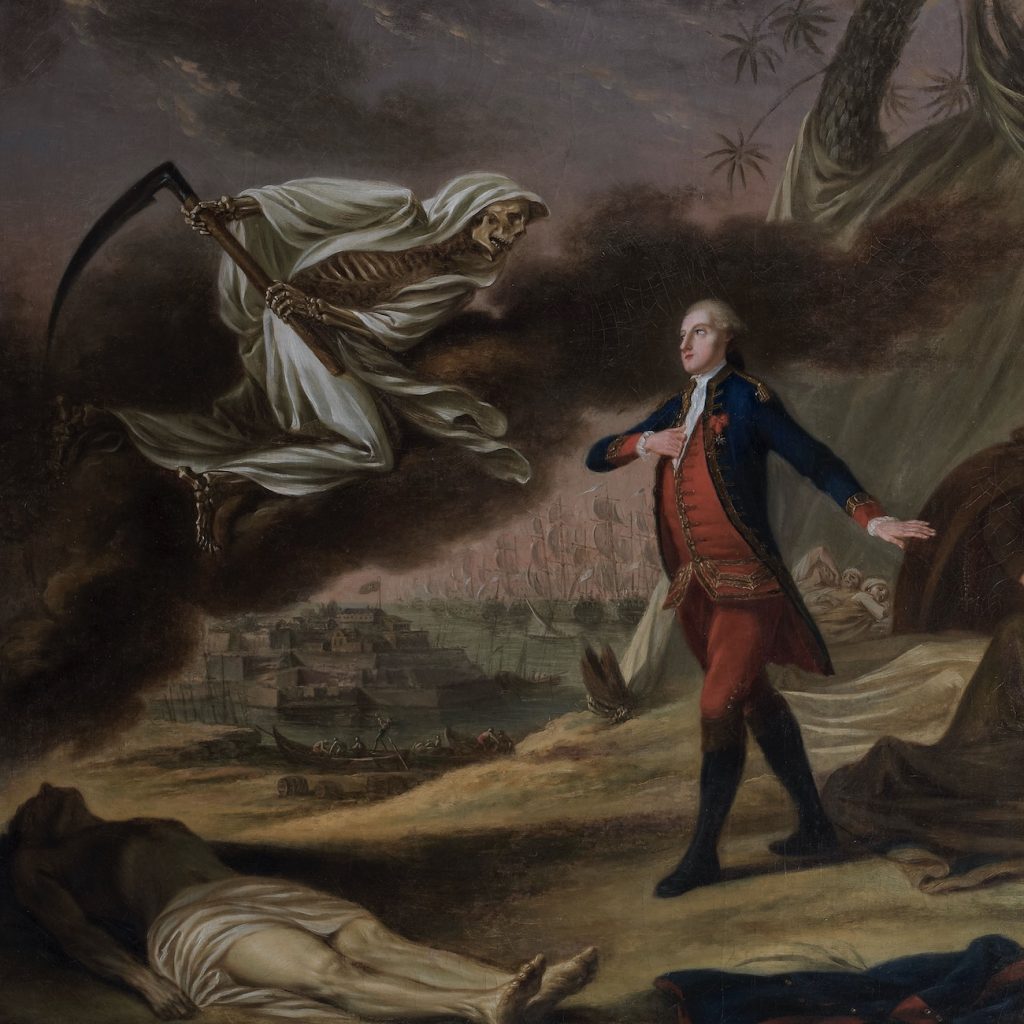
We have no portrait of Private Jeffrey Brace, and no more than a hint of a description of him. The records of his service in the Revolutionary War, like those of thousands of other black soldiers who fought for independence, are scattered, fragmentary, and confused. Assembling and assessing what remains rewards us with a rich narrative of one man’s brave struggle to be free and of the new nation’s painful progress in realizing the ideal of equality on which the Revolution was based. Jeffrey Brace has much to teach us.
That we know anything at all about him is due almost entirely to an extraordinary little book published in St. Albans, Vermont, in 1810, called The Blind African Slave, Or, Memoirs of Boyrereau Brinch, Nicknamed Jeffrey Brace. The book was written by an idealistic young lawyer named Benjamin Prentiss and published by Harry Whitney, the twenty-two-year-old editor of a short-lived newspaper, the Franklin County Advertiser, which closed down the week the book was released. The original edition is now one of the rarest published accounts of service in the Revolutionary War.
Brace was nearing seventy when Benjamin Prentiss recorded his story. Prentiss is even more obscure than his subject, and we don’t know how he came to know Brace. Prentiss was plainly motivated by the ideals of the American Revolution and determined to see the nation fulfill their promise. “In America,” Prentiss wrote, “that spirit of liberty, which stimulated us to shake off a foreign yoke and become an independent nation, has caused the New-England states to emancipate their slaves, and there is but one blot to tarnish the lustre of the American name, which is permitting slavery under a constitution, which declares that ‘all mankind are naturally and of right ought to be free.’ Whoever wishes to preserve the constitution of our general government, to keep sacred the enviable and inestimable principles, by which we are governed, and to enjoy the natural liberty of man, must embark in the great work of extirminating slavery and promoting general emancipation.”
The Blind African Slave was the product of a collaboration between the idealistic young lawyer and the elderly man who told him his life story. That story was shocking in 1810 and it remains so today. It is a story worth grappling with—a raw account of the inhumane brutality of enslavement, of a fight for personal independence, and of endurance despite the crushing weight of racial injustice, recorded by two men who challenge us to live up to the ideals of the Revolution.
Jeffrey Brace was born Boyrereau Brinch—or at least that was how Prentiss rendered the name the old man spoke in his native language. He had been born about 1742 in the Niger River basin, apparently in what is now southern Mali, in a place Prentiss called the kingdom of Bow-woo. Prentiss cobbled together a fanciful description of the place from travelogues and geography books. Brace’s voice does not come through clearly until the moment he is captured by slave traders. He was then about sixteen.
What follow is a gruesome, detailed account of being bound, chained, and crowded onto a slave ship bound for the Caribbean, and of brutality, starvation, and death on the Middle Passage. The savage cruelty inflicted on the enslaved did not end when they arrived at their destination. When the vessel arrived in Barbados, the Africans were herded into a warehouse—Brace called it a “house of subjection,” where they were beaten and starved to break their will, because to make a docile slave, “the thought of liberty must never be suffered to contaminate itself in a negro’s mind.”
The thought of liberty never left Brace’s mind. After months of this inhuman treatment, the young African was sold to a New England merchant captain named Isaac Mills whose ship was fitted out as privateer. He spent the next two years at war. In a fight with a Spanish ship, he remained on deck and was shot in the hip and through the ankle. Mills then gave him the name “Jeffrey,” after British General Jeffery Amherst—more daring than prudent. He bore the name for the rest of his life. When the French and Indian War ended, Mills had no more need of Jeffrey, and sold him to John Burwell of Milford, Connecticut.
Brace’s account of his first years as a slave in New England is at odds with the common notion that New England slavery was gentler than enslavement in the South. Burwell was a sadist who beat Jeffrey without mercy, fed him no more than six ounces of coarse food a day, forced him to work outside in winter with neither coat nor shoes, and left him to sleep on a cold hearth with nothing but his ragged clothes to cover him. Burwell’s treatment was so inhumane that a neighbor, Samuel Eals, intervened and took Jeffrey in, threatening to lodge a legal complaint against Burwell.
Eals cared for Jeffrey until his wounds healed and his health improved, then passed him on to Peter Prudden, who must have paid Burwell for the young man. Prudden whipped him severely on five occasions over two months before trading him for some old horses to a merchant named John Gibbs, who beat him daily for four months before selling him to Phineas Baldwin, the father-in-law of Captain Mills. Baldwin sent Jeffrey to live with his son, Phineas, whose small children Jeffrey tended for several months. The Baldwins apparently didn’t beat Jeffrey, but his next owner, merchant Jonas Green of Milford, whipped him about twice a week before hiring Jeffrey out to a local tanner.
In the fall of 1768 Green sold Jeffrey to Mary Stiles, a seventy-three-year-old widow who lived in Woodbury, thirty miles to the north, beginning what Brace remembered as “a glorious era in my life, as widow Stiles was one of the finest women in the world; she possessed every christian virtue.” The widow taught Jeffrey to read and improved the broken, rudimentary English he had picked up. Under her instruction, Jeffrey learned to read the Bible.
When Mary Stiles died in 1774, Jeffrey—then known as Jeffrey Stiles—became the property of her son Benjamin. Jeffrey had been in New England a decade, but his memoir makes no mention of resistance to British taxation, the military occupation of Boston, nor any of the other familiar events leading to the war for independence. Yet when the opportunity presented itself, and with Benjamin Stiles’ permission, Jeffrey enlisted in the army. In his words, he “entered the banners of freedom. Alas! Poor African Slave, to liberate freemen, my tyrants.”
Why did he enlist? He does not say, but we can infer that Benjamin Stiles agreed to manumit him in return. Two of Stiles’ three sons served in the militia, but there is no record of the middle son doing so. Perhaps Jeffrey first entered the service as a substitute. Some Connecticut masters agreed to manumit their slaves in exchange for all or part of their military wages—essentially permitting the enslaved to purchase their freedom. Others agreed to free slaves who entered the army as a contribution to the Revolutionary cause. Still others did so because they realized that slavery was inconsistent with the principles of the Revolution. Abijah Holbrook of Torrington explained that “all mankind are by nature entitled to equal liberty and freedom” when he freed his slave. Rachel Johnson of Wallingford freed a slave in 1778, insisting that “I believe all mankind should be free.”
Jeffrey seems to have enlisted in early 1777, when he was around thirty-five. According to his memoir, he was under fire in April, when the British army mounted a raid on the Continental Army supply depot in Danbury, Connecticut. The Royal Navy landed a force of some 1,900 British regulars and loyalists near Westport on April 25. The troops marched north for Danbury, twenty-five miles distant, and the next day burned several thousand barrels of beef, pork, and flour, along with thousands of shoes, tents, and other supplies.
Continental troops and Connecticut militia were caught unprepared, but gathered in sufficient force to harass the British troops on their return march to the coast the next day. “General Worcester,” Jeffrey told Prentiss (who misspelled the name of David Wooster) was in command. “We beat them back,” Jeffrey said. “The fight was continued all day, and the victory was sometimes doubtful.” This was the Battle of Ridgefield, a moving fight that began with Wooster’s attack on the British rear guard three miles north of the town. Wooster attacked again an hour later and was mortally wounded. The running battle continued for the rest of that day and into the next along the British line of march, with Continentals and militia firing on the marching column, retreating, and reforming to attack again down the road. The British managed to escape to their transports, but never attempted another inland raid of the kind. Jeffrey was one of the few men in action that day who had experience under fire, and he undoubtedly acquitted himself well.
While the records are confused, Jeffrey seems to have enlisted in the Sixth Regiment of the Connecticut Continental Line in June 1777, under the name “Pomp London.” Shortly thereafter he was assigned to the regiment’s light infantry company, a select group of skilled soldiers distinguished for their height (“I then wanted but a quarter of an inch of being six feet three inches”) and athletic ability. The light infantry wore distinctive leather helmets and were sometimes referred to, as they are in Jeffrey’s memoir, as “leather caps.” He remained in the light infantry for the rest of the war.
The account of Jeffrey’s wartime service in The Blind African Slave is jumbled by his own hazy recollections and by Prentiss’s inability to make sense of what Jeffrey told him. Prentiss had a weak understanding of the war’s chronology, and misinterpreted Jeffrey’s account, placing him at the Siege of Boston, the defense of New York City, and the battles of White Plains and Princeton, all of which occurred before Jeffrey enlisted.
Jeffrey’s regiment was assigned to the Hudson Highlands south of West Point, where he spent the winter of 1777-1778. The next spring he marched to the Hackensack Valley of New Jersey, where his company skirmished with British foraging parties sent out from New York City. Jeffrey offers a vivid account of pursuing British raiders who were driving a herd of cattle back to New York. Caught alone when while standing watch in the rear of a scouting party, he was attacked by a British light horseman who demanded his surrender:
“I then plainly told him that him nor his King’s majesty would get my arms unless he took them by force. He immediately cocked his pistol and fired; I fell flat upon the ground in order dodge his ball, and effectually do it that he missed me. I rose, he drew his sword and rode up to me so quick that I had no time to take aim before he struck my gun barrel with cutlass . . . also cut off the bone of my middle finger on my hand. As he struck the horse jumped before he could wheel upon me again. . . . I fired and killed him.”
Jeffrey mounted the dead man’s horse just as four other British cavalrymen, drawn to the sound of gunfire, bore down on him. They were quickly joined by others. Jeffrey galloped toward the American lines, “but not being a good horseman they gained upon me.” His pursuers were “within two or three jumps of me,” he remembered, when his captain caught sight of him and ordered a volley that killed four of the British cavalrymen and scattered the rest.
Only when he dismounted did Jeffrey realize he had lost part of a finger: “I found I could not open my hand which was the first time that I discovered that I was wounded.” The injury kept him out of combat for three months. Reflecting on why the pursuing cavalry didn’t shoot at him, Jeffrey speculated that they expected that he was more valuable alive—that he would either “acquaint them with the state of our army” more readily that a white soldier, or that he might “be sold by them and enrich their coffers.”
As a light infantryman, Jeffrey probably fought under Anthony Wayne in the successful attack on Stony Point in 1779. His regiment endured the winter encampment at Morristown, New Jersey, in 1779-1780 and spent the remainder of the war sparring with British foraging parties, maintaining pressure on the British lines around New York City, hemming the enemy in and forcing the British army to rely on supplies brought from overseas—an expensive and exposed line of supply continuously attacked by American privateers and French warships.
Jeffrey served in the Continental Army for more than five years, and when he was finally discharged in the summer of 1783, he was awarded the badge of merit, which had been devised by George Washington to honor the service of the most loyal soldiers. “Thus was I,” Jeffrey concluded, “a slave, for five years fighting for liberty.”
He had fought for his own liberty as well as that of the United States. He returned to Benjamin Stiles’ home in Woodbury for a year. He recorded with pleasure that “my services in the American war having emancipated me from further slavery and from being bartered or sold.” Jeffrey explained that he had “heard flattering accounts of the new state of Vermont,” and decided to settle there. Vermont had adopted a constitution in 1777 providing for the gradual abolition of slavery, and the “flattering accounts” Jeffrey had heard undoubtedly gave him confidence that he could escape further enslavement there.
He moved to Lenox, Massachusetts, and hired himself out as a laborer—“the first time I made a bargain as a freeman for labor.” He made a little traveling money and moved on to Poultney, a town in southwest Vermont, where he hired himself out as a laborer again. The experience was a delight. “I enjoyed the pleasures of a freeman,” he told Prentiss, “my food was sweet, my labor pleasure: and one bright gleam of life seemed to shine upon me.” He found a twenty-five acre tract of woodland to buy for $250 and worked off the purchase price, planning to clear and farm the land. He married a widow who, like himself, had been born in Africa and endured the horrors of enslavement.
During his first years as a free man he began calling himself Jeffrey Brace—adopting an Anglicized version of his African surname. He and his wife Susannah apparently had three children—they were living together on his Poultney land, partly cleared and planted in wheat and corn, when the census of 1790 was taken.
Their life in Poultney was troubled. A white neighbor with designs on the Brace farm pulled down their fence and allowed his cattle to ruin Jeffrey’s crops, and later as an act of revenge for an imagined slight he tried to get the Brace children taken away and indentured on the grounds that Jeffrey and Susannah were not fit to raise them. In 1802, when Jeffrey was about sixty, they sold the farm and moved to Sheldon, Vermont, where the family lived for a few years before moving on to Georgia, a farming community on the shores of Lake Champlain just south of St. Albans. Brace and his son-in-law cleared a farm and prospered for a few years, but misfortune overtook him again. Susannah died in 1807. Jeffrey lost his sight about the same time.
Shortly thereafter, we can assume, he met Benjamin Prentiss, who recorded his story. Their collaboration reminds us of the suffering men and women endured in slavery, of the heroics of ordinary men, black and white, in our war for independence, and of the better world the Revolution still calls on us to create for all Americans. Jeffrey Brace was enslaved, but his spirit was never broken. He held out hope for a society in which all might enjoy freedom, which he said “all mankind have equal right to possess.” In a world where so many suffer injustice, his hope should be our own.
Above: This preliminary figure for the proposed—and long overdue—Black Revolutionary War Patriots Memorial in Washington, D.C., was sculpted by Ed Dwight in 1992 and is in the museum collections of the American Revolution Institute of the Society of the Cincinnati. The memorial would honor Jeffrey Brace and the thousands of other black soldiers and sailors who served in our struggle for independence.



